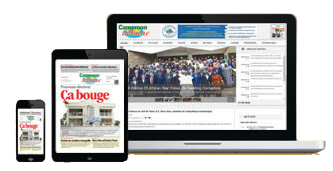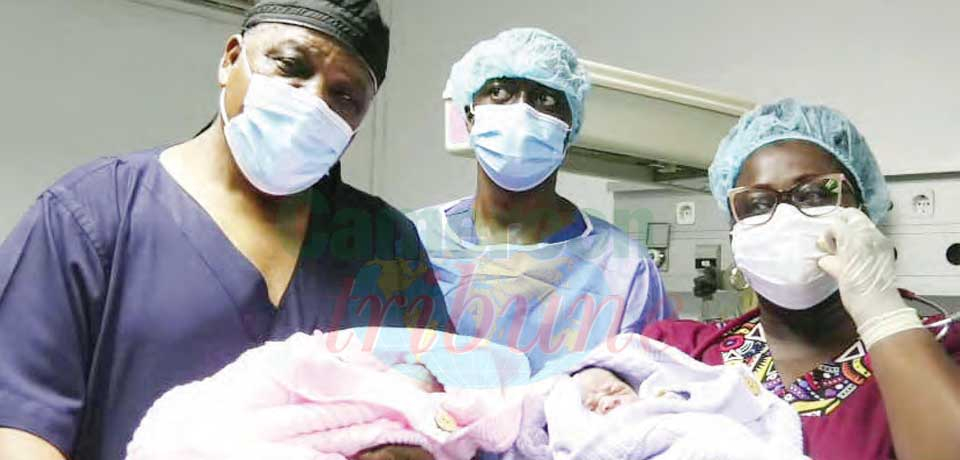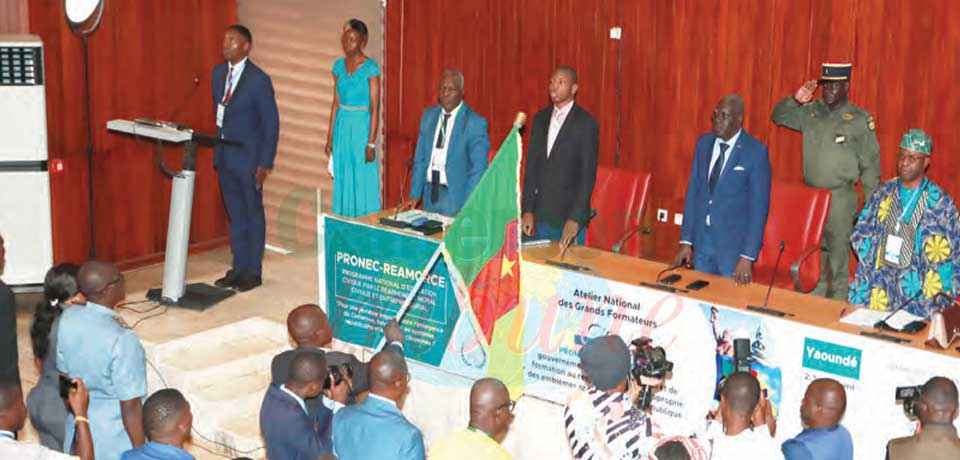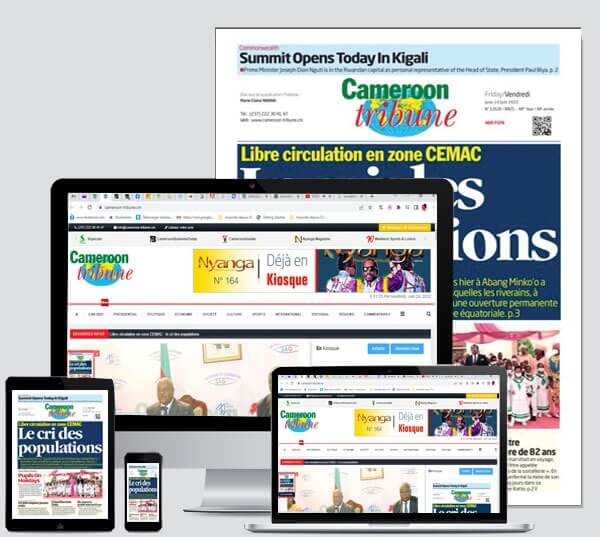HIV/AIDS, Health Advocacy : Government, Councils Mull Local Financing
- Par Kimeng Hilton
- 01 avril 2025 22:00
- 0 Likes

The advocacy meeting convened in Yaounde on April 1, 2025 by the Ministry of Public Health sought to find ways and means of supporting local health initiatives.
Over 100 countries across were rattled on January 25, 2025. When the Donald Trump-led new American administration announced it was suspending its health support for 90 days. Pending a comprehensive review. Also rattled by the announcement were Cameroonian health authorities and the country’s development partners. The need suddenly arose to fill the gap created by American funding suspension. Most worthy of note – and affected by the suspension – are HIV/AIDS programmes in the country.
Including Health
Thus the raison d’etre of the advocacy meeting held in Yaounde on Tuesday, April 1, 2025. It was called by the Ministry of Public Health, the National AIDS Control Committee and the charity, CARE Cameroon. It had as main objective to discuss “Integrating Health Activities and HIV/AIDS Response in Council Development and Annual Investment Plans.”
Rising Needs
“Increasing responsibilities have been devolved to local councils in terms of health. CARE is one of the main actors of the Global Fund in Cameroon in matters of HIV/AIDS. We have been working with councils to fight the disease and tackle health in general. One way of going about this is to work with councils and local health agents to raise awareness on the illnesses,” explained Miriam Stein Mezui, CARE Cameroon Programme Director.
Maximize Resources
“Getting funding to integrate health activities in council development plans is not easy. That is why we invited representatives of councils in Mfoundi Division to discuss the issue. These councils have already been doing very interesting things. I think it is about maximizing resources to be the most efficient. That is also why we talked of polyvalent health agents who can work on many health issues and diseases.
Polyvalent Health Volunteers
“Some of the local Non-governmental Organisations, NGOs we have been working with use experienced community health volunteers and peer educators. They can be trained to sensitise on other diseases and help councils integrate and implement their health programmes,” Mezui suggested. Announcing that similar advocacy workshops will be held in all 10 administrative regions of Cameroon by civil society organisations in the coming weeks.
Little Means At Their Disposal
“The meeting concerned health in general and HIV/AIDS and tuberculosis in particular. We acquired new knowledge to enable us work with people in our council areas. Concerning the recent decision by the American government to suspend health funding for 90 days, we are still hopeful that the decision will be reversed. Our councils do not have the means, and so our role is mainly to raise awareness on health issues,” said Amougou Jean Claude, Head of the Council Group, Yaounde 5 Subdivisional Council, Mfoundi Division, Centre Region.
Insufficient Partner Support
“The major concern of all seven sub-divisional councils in Mfoundi Division is to source finance to carry out health activities. Our council, Yaounde 5 Subdivisional Council, has some partners in Europe who from time to time come to our aid to cover health activities. But the assistance is not much. That is why councils are all looking up to the Ministry of Public Health in these times of decentralization,” Mr Amougou admitted.
Health Coverage Prerequisites
“We have been sensitizing on HIV/AIDS in our council area because many people are affected by the disease, alongside the Health Committee. We have also been sensitizing on pre-registration and registration for Universal Health Coverage – its benefits and those who are eligible. Pre-registration is to guard against any future health challenges. While registration concerns people already suffering health challenges.
"Those eligible are children under five years, and people on dialysis, pregnant women and newborns up to 42 days old, persons living with HIV/AIDS, tuberculosis and onchocerciasis,” disclosed Mrs. Rikong Laure, councilor, Yaounde 2 Subdivisional Council.
Pre-registration, Registration
“The workshop helped to clarify the difference between pre-registration and registration for Universal Health Coverage. Our council has so far registered over 1,000 people for Universal Health Coverage. We will take the advocacy message from the workshop to our council officials on the need to include health issues in council development plans and council annual investment plans. The health of people in our council area is of great concern to us. I head the Social Affairs Committee in our council, which is in charge of health matters. We will continue to lobby for our council to integrate health activities in its development plans. I am confident my council will do it.
Pregnant Women, Nursing Mothers
“Our target for Universal Health Coverage is pregnant women who come for ante-natal clinic and babies. We make sure they get registered for Universal Health Coverage. Our major challenge is that some pregnant and nursing women do not understand the importance of Universal Health Coverage. This demands continuous sensitization,” Mrs. Rikong said.
Poverty, Unemployment
According to Denis Roland, a councillor with Yaounde 3 Subdivisional Council, they discussed how to find alternative funding for council health activities - and the strategy to adopt for the future in the face of HIV/AIDS, which is a major health challenge. “Though statistics suggest that HIV infections are on the decline in Cameroon, other challenges like poverty and unemployment have compounded the situation. Each council has to carry out studies on its health challenges before sourcing funding for such activities,” Denis Roland emphasized.
HIV Prevalence
Cameroon is facing a mixed epidemic, both widespread and concentrated in certain highly exposed population groups. According to the 2018 Demographic and Health Survey (DHS), the downward trend of HIV prevalence observed over the years is confirmed by projection data from the SPECTRUM 2020 software. The trend is similar in both sexes, and the female/male differential has persisted since 2004. With a sex ratio of approximately two infected women for every infected man.
Regional Statistics
The 2018 DHS shows that six of the ten regions have a prevalence rate above the national average (2.7%) - namely the South (5.8%), the East (5.6%), Adamawa (4.7%), the North West (4%), the South West (3.2%), and the Centre (excluding Yaoundé) (3.5%). The significant decline in HIV prevalence at the national level is not observed in every region. Indeed, prevalence is virtually stable in the Far North, North, and South regions, while the Centre region (excluding Yaoundé) is experiencing a relatively slight decline.
Age-group Disparities
Still according to the 2018 DHS, disparities by age group and gender remain very marked. Overall, a higher prevalence among women than men (3.4% versus 1.9% among 15-49 year-olds) is observed in all age groups after age 19 (see Figure 2). There is no incidence analysis for key populations.
Spectrum 2020 estimates say the number of people living with HIV in Cameroon is estimated at 506,432 in 2019, including 33,289 (6.5%) children under 15 years of age, with a sex ratio of 1:1, and 308,079 women among 474,951 PLHIV aged 15 to 49 years (65%).
Mayors’ Commitment
On World AIDS Day 2014, mayors from around the world gathered in Paris, France, to sign a declaration to end the AIDS epidemic in their cities. By signing the 2014 Paris Declaration, mayors committed cities to "accelerate" their efforts to end AIDS by making a series of commitments. These commitments include achieving the UNAIDS "90-90-90" targets: 90% of people living with HIV know their HIV-positive status, 90% of people aware of their HIV-positive status are receiving antiretroviral therapy, and 90% of people on treatment have an undetectable viral load, which will help keep them healthy and reduce the risk of HIV transmission.
HIV And Cities
During the event, UNAIDS also released a report on HIV in Cities, which highlights the important role urban areas will play in ending the AIDS epidemic by 2030. The report on cities shows how cities and urban areas are particularly affected by HIV; the 200 cities most affected by the epidemic are home to an estimated more than a quarter of the 35 million people living wit...
Cet article complet est réservé aux abonnés
Déjà abonné ? Identifiez-vous >
Accédez en illimité à Cameroon Tribune Digital à partir de 26250 FCFA
Je M'abonne1 minute suffit pour vous abonner à Cameroon Tribune Digital !
- Votre numéro spécial cameroon-tribune en version numérique
- Des encarts
- Des appels d'offres exclusives
- D'avant-première (accès 24h avant la publication)
- Des éditions consultables sur tous supports (smartphone, tablettes, PC)














Commentaires